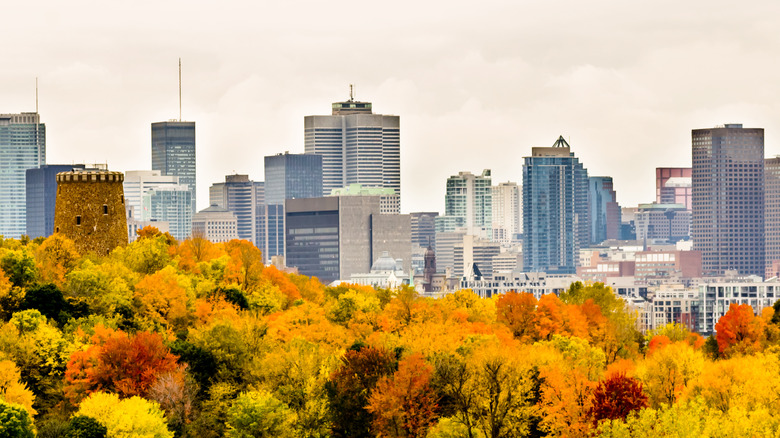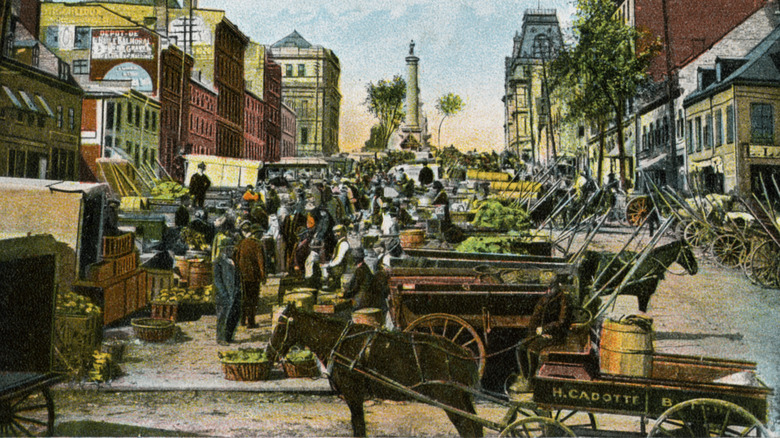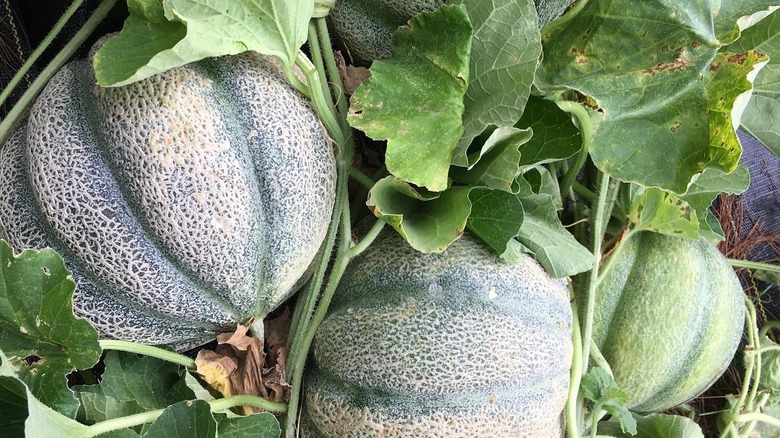The Canadian Melon That Was Once As Expensive As Steak
The city of Montreal is one of the oldest in Canada, and it's brimming with history. Part of the French colonial expansion into North America, Montreal quickly became a center of trade, manufacturing, and finance thanks to its position on the St. Lawrence River. Montreal is the third most visited city in Canada, with an average of over 2 million visitors a year, and is the best place to get an authentic taste of French Canada (via Britannica and GeoGuessr).
Though Montreal today is known for both its international event hosting, poutine, and proliferation of maple sugar products, there was a time when the most famous product to come from this unique city was, in fact, a melon. The Montreal melon, according to Atlas Obscura, was once a prized dessert for affluent New Yorkers, and a single slice of it cost the equivalent of $30 in today's money, roughly the price of a good steak. Despite its expense and popularity, the Montreal melon has all but vanished. However, there was a time in Montreal when this fruit, known as the Champagne of Melons, was grown in abundance.
Montreal's agricultural heritage
Though modern Montreal is very much a metropolitan city, during the 18th and 19th centuries, the city's landscape was dramatically different. According to Atlas Obscura, Montreal's neighborhood of Notre Dame de Grace was once the agricultural corner of the city. It was rich, fertile farmland owed, in large part, to the fact that farmers utilized the copious amount of horse manure from the city's many equine racetracks to fertilize the fields.
All of this made for near-perfect conditions to grow the Montreal melon, which is not the easiest of fruits to grow. According to Seed Savers Exchange, which sells a variety of Montreal melon close to the original, these heirloom fruits need to be grown in open fields as they require full sun. They should also be planted in 12-inch diameter hillocks after the danger of ground frost has passed.
The Montreal melon became so popular in New York restaurants during the late 19th and early 20th centuries that they received daily shipments from the city. However, the finicky nature of the plant, along with the New York market steadily losing interest and urban development taking away more and more farmland, the Montreal melon all but vanished, save for a few intrepid enthusiasts determined to keep the tradition alive (via Montreal Gazette).
Keeping tradition alive
According to Atlas Obscura, in the early 1990s, Montreal Gazette journalist Barry Lazar lamented that this fruit, with such an excellent historical connection to the city, had essentially disappeared. This inspired his colleague, Mark Abley, to begin a treasure hunt for Montreal melon seeds. He eventually connected with a U.S.D.A. office in Iowa that had some in their collection. Abley passed the seeds along to his friend, college chemistry professor and organic gardener Ken Taylor, who successfully grew Montreal melons of up to 25 pounds.
According to a Montreal Gazette article published at the time, Taylor grew more melons than he knew what to do with. He lost about 300 melons in his 1997 crop, but he managed to save the seeds, which he gave away to anyone who wanted them. It's mostly thanks to these three gentlemen's efforts that seeds can be found online at places like Seed Savers Exchange, Annapolis Seeds of Nova Scotia, and Fedco Seeds. Talented and patient growers, who can put up with the melons demanding nature, can now partake in an ongoing tradition that could have been lost forever.


